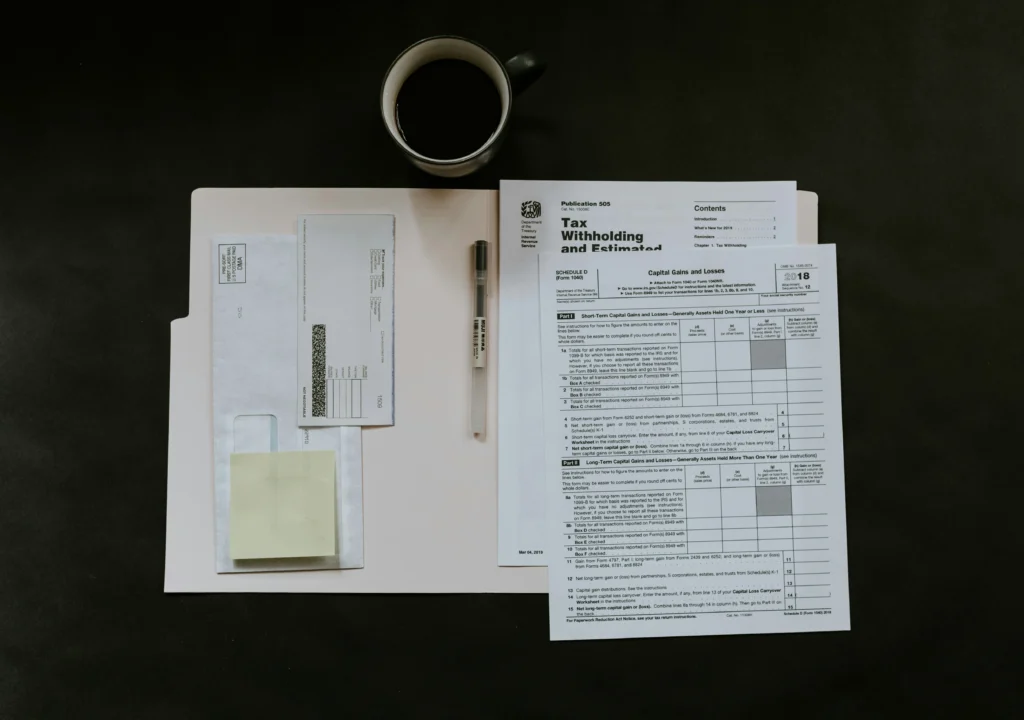Introduction
The Income Tax Act (ITA) of 1961 is a comprehensive law in India that imposes taxes on the income of not only high-earning professionals and businesses but also individuals in various roles, including homemakers. The government has included specific provisions in the ITA to streamline taxation activities for homebuilders. In this overview, we will look at the tax slabs, deductions, and other related aspects of income tax on FD for home builders.

Table of Contents
- Current Scenario of Income Tax for A Housewife
- Income Tax Slab for Women
- Sources of Income for A Housewife
- Tax Exemption for Housewives
The Indian taxation system is designed to be transparent. Provides a clear framework for calculating and levying taxes on the income of various entities. This includes not only those who earn income through professional activities but also housewives.
Some people play a major role in managing household affairs. Irrespective of the source of income, anyone falling within the prescribed income slabs has to contribute to the government revenue through the payment of taxes.
Current Scenario of Income Tax for A Housewife
As per the recent updates in the Income Tax Rules for the financial year 2023-24, some provisions have been introduced to reduce the tax burden on housewives. In the current scenario, a housewife should be below 80 years of age and have an annual income of Rs. 3 lakhs, she is exempt from paying any income tax.
However, if she falls under the super senior citizen (80 years or above) category, the tax-exempt income limit is Rs. 5 lakhs will be extended. Housewives accumulate their income from various sources. This implies that there is a need to worry about tax liabilities only if these prescribed limits are exceeded. As long as their total earnings are less than the specified amounts, they are not subject to any income tax liability.
This development reflects the government’s progressive policy of providing financial relief to people with limited or no income of their own, especially housewives. Delineation of age-specific thresholds recognizes the different financial situations individuals face. Aligning tax obligations with their ability to earn income.
Income Tax Slab for Women
Income tax slabs for individuals including housewives are designed to levy different tax rates based on income levels. These slabs are revised from time to time by the government to take into account economic changes.
For women below the age of 60 years
| Income tax slab | Tax rates % |
| Less than Rs 3 lakh | NIL |
| Rs 3,00,001 to Rs 6 lakh | 5 % |
| Rs 6,00,001 to 9 lakh | 10 % |
| Rs 9,00,001 to 12 lakh | 15 % |
| Rs 12,00,001 to 15 lakh | 20 % |
| More than 15 lakh | 30 % |
For women between 60 to 80 years
| Income tax slab | Tax rates % |
| Less than 3 lakh | NIL |
| Rs 300001 to Rs 5 lakh | 5 % |
| Rs 500001 to Rs 10 lakh | 20 % |
| More than 10 lakhs | 30 % |
Sources of Income for A Housewife
Housewives earn income from different sources than traditional employment or self-employment. Here, we have covered some of the keyways.
Household expenses
Housewives often receive funds from their husbands to manage household expenses. Although these funds are transferred to the wife’s bank account, they are not treated as her taxable income.
Fixed Deposit (FD) Interest
Interest accrued from fixed deposits is subject to taxation. If the interest earned surpasses the exemption threshold, it will be regarded as part of the wife’s income. And income tax is levied.
Husband investment in wife name
This tax is applicable in cases where the husband invests his income in the name of his wife. The amount invested is still attributable to the husband for tax purposes. Any returns or earnings from such investments by the wife will be taxed in her name.
Tax Exemption for Housewives
Housewives in India have opportunities to avail of tax deductions and exemptions to help reduce their taxable income. Housewives earning Rs. 40,000 are eligible for tax exemption. This deduction provides financial relief and acknowledges the health care expenses incurred by housewives in maintaining the well-being of their families.
Interest earned on a Post Office Savings Account is tax-exempt. For individual accounts, the exemption limit is Rs. 3,500. And for joint accounts, it is up to Rs. 7,000 as per Section 10(15)(i). This exemption encourages housewives to consider savings in post office accounts as a tax-efficient option, promoting financial prudence.
Conclusion
Stay updated on the latest developments in the Indian real estate industry by following the Openplot.com Knowledge Center. Our platform provides informative articles, expert opinions, and market reports as well as valuable insights, news, and updates. Welcome to the world where your ideal home is just a click away!
Also read: VVMC Property Tax: How to Pay in the Vasai-Virar Area?